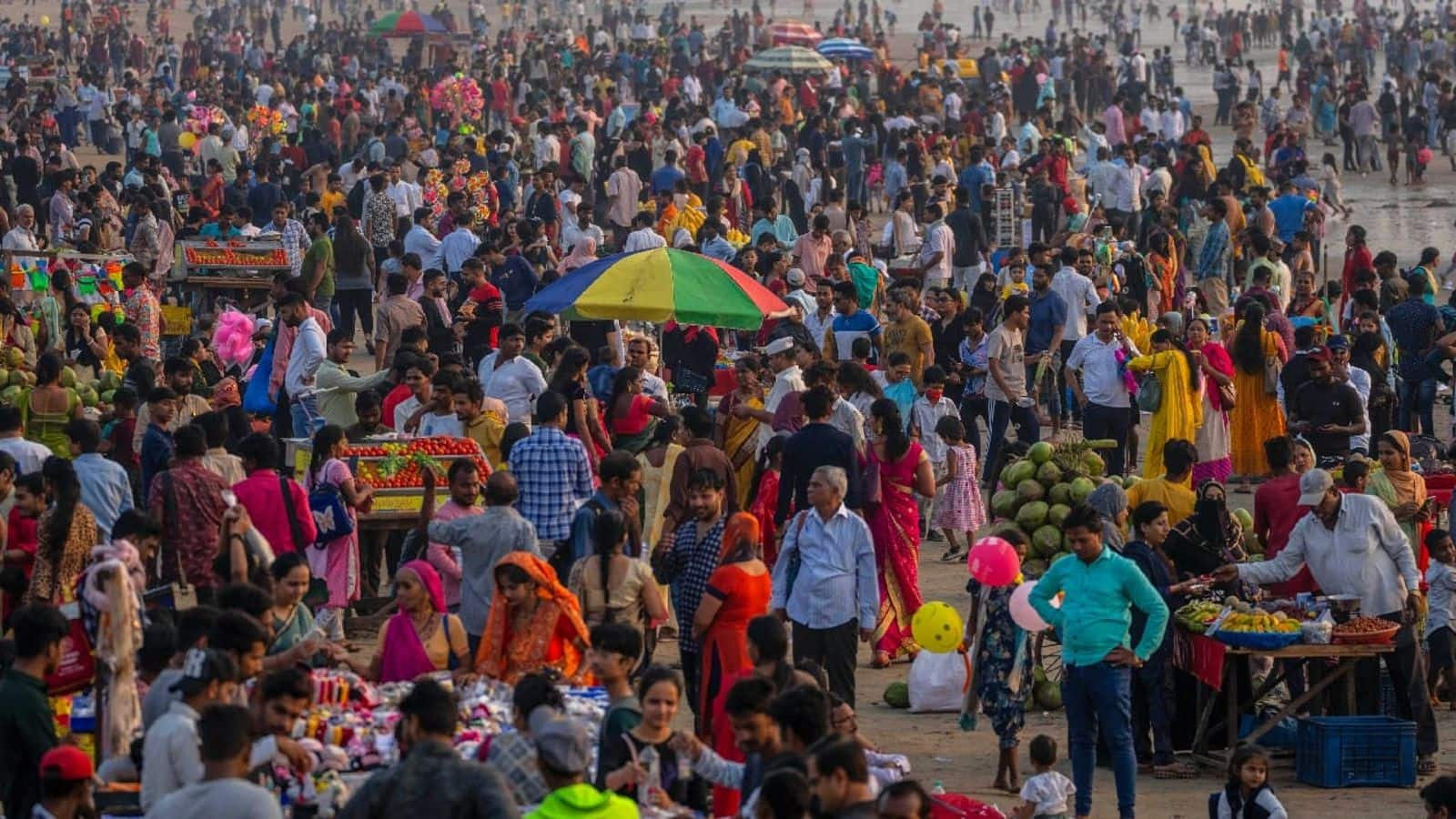
India's population estimated at 144 crore: UNFPA report
What's the story
The United Nations Population Fund (UNFPA) recently published a report titled "Interwoven Lives, Threads of Hope: Ending Inequalities in Sexual and Reproductive Health and Rights," indicating that India's population has reached an estimated 144 crore. The report reveals that a quarter of this population is aged between 0-14 years. This places India at the top spot globally in terms of population, surpassing China's 142.5 crore.
Demographics
Age breakdown of India's population detailed
The UNFPA report provides a comprehensive age breakdown of India's population. It states that 17% of the population is aged between 10-19 years, while 26% falls within the 10-24 age bracket. The majority, comprising 68%, is within the 15-64 age group. Additionally, it was found that 7% of India's population is aged over 65 years.
Health report
Progress and disparities in sexual and reproductive health
The UNFPA report highlights the progress made in sexual and reproductive health over the past three decades. However, it also underscores that these advancements have largely bypassed the most marginalized communities worldwide. In India, child marriage was reported at a rate of 23% between 2006-2023. On a brighter note, maternal deaths have seen a significant decrease during this period.
Maternal health
Maternal health services improve, disparities persist
The report acknowledges India's success in improving access to affordable, quality maternal health services and addressing the impact of gender discrimination on health outcomes. However, it also highlights stark disparities in maternal death risk across the country. Research into India's 640 districts revealed significant variations in maternal mortality ratios. While nearly one-third achieved the sustainable development goal of reducing maternal mortality ratio below 70 per 100,000 live births, some districts still have ratios as high as 210 or more.
Gender-based violence
Women with disabilities face increased violence
The UNFPA report draws attention to the plight of women with disabilities in India, who are up to 10 times more likely to experience gender-based violence than their peers without disabilities. It notes that improvements in healthcare access have primarily benefited wealthier women and those from ethnic groups with better healthcare access. The report emphasizes that marginalized groups face greater sexual and reproductive health risks, which are further exacerbated by factors such as climate change, humanitarian crises, and mass migration.
Dalit activism
Dalit women face discrimination and lack of care
In India, Dalit activists have been advocating for legal protection for women facing caste-based discrimination in workplaces and education. The report underscores that almost half of Dalit women receive no antenatal care, and high rates of gender-based violence are used as a means of oppression and control. Despite the progress made over the years, the report points out that millions of women and girls remain far behind, with progress slowing or stalled on key measures.